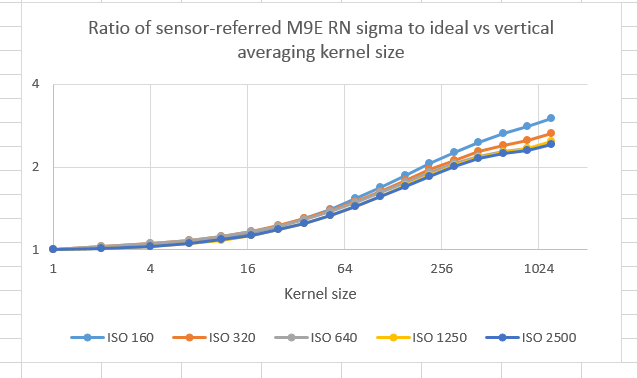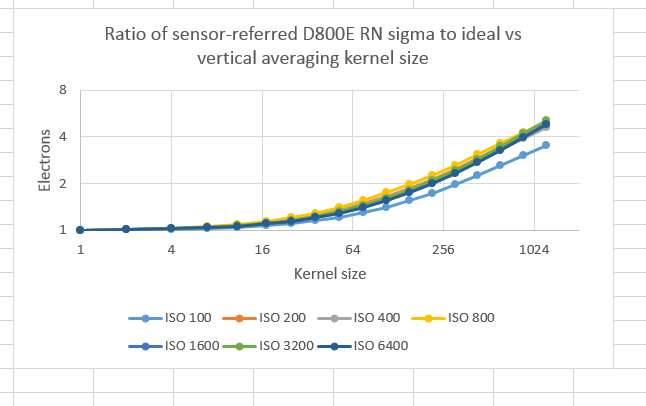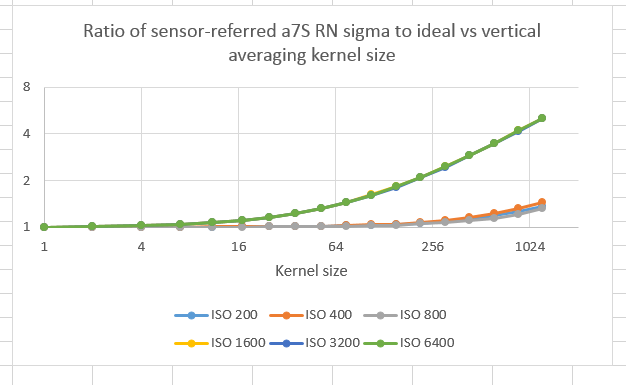I took a quick look at the Hasselblad H2D-39 a few days ago; that’s the only CCD camera for which I’ve analyzed the read noise. The H2D-39 cuts off the left half of the read noise histogram when making dark-field images, so it’s not ideal for these tests. The Leica M9 does not. In fact,… [Read More]
Nikon D800E dark field images
Here are the images from the preceding post. As usual in this read noise analysis series, they have been scaled into the range [0,1], have had a gamma curve of 2.2 applied , been res’d down to 640×480, and JPEG’d. First at ISO 100 with no filtering: Hot pixels dominate the normalization, driving the typical… [Read More]
Nikon D800E read noise analysis
Next up for read noise analysis is the Nikon D800E. Unlike the D810, the D800E and the D800 subtract out the black point before they write the raw file, so we won’t get a crystal clear picture of the read noise from a dark-field exposure, but, as we saw with the Leica M240 yesterday, we… [Read More]
Leica M240 dark-field images
Here’s the ISO 200 unfiltered dark-field image. Like all the images in this post, the images have been scaled into the range [0,1], have had a gamma curve of 2.2 applied , been res’d down to 640×480, and JPEG’d. There are hot pixels that darken the average value of the image. With 36-pixel kernels of… [Read More]
Leica M240 read noise analysis
Today I turn the read noise analysis tools developed over the past couple of weeks to a new camera, the Leica M240. The M240 is one of those cameras that subtracts out the black point before it writes the raw file, so we won’t get a clear picture of the read noise from a dark-field… [Read More]
- « Previous Page
- 1
- …
- 227
- 228
- 229
- 230
- 231
- …
- 384
- Next Page »




